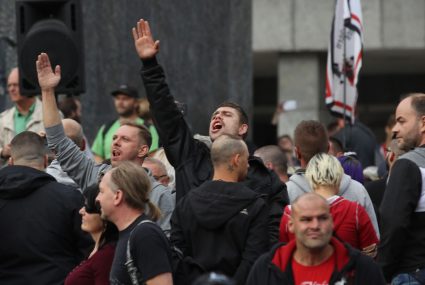r/Place, an incredible 2017 reddit experiment with a simple premise and strict parameters, stands out for the spirit of challenge and community it ignited. It brought the best of collaborative street art into the heart of the digital realm, it earned its place in the annals of internet culture, and it’s worth revisiting and remembering. Here’s how it went down, through the eyes of one very engaged participant.
(If you’re unfamiliar with reddit, here’s a pretty good primer.)
“The story of r/Place. As told by a foot soldier for r/Mexico.”
By Arturo Gutierrez
ART + Marketing
April 3, 2017

I’m sure other historians can tell you who was the first. Others much more knowledgeable than me who can pinpoint where exactly in the vast Canvas did the cursors of hundreds aimed themselves into a singular area, and willed order out of the chaos. But I’m not the one to tell.
Instead, what I saw as a bystander that April 1st was the emergence of life, color, and memes of all sizes and kinds growing almost by magic. And as the hours passed, as I laid a pixel here, waited, and laid another pixel there, the whole Canvas evolved and grew between each of my visits. It was an amazing sight to behold. An inspiring feat of human ingenuity, humor, and improvised politics in slow motion.
Yes, that’s right. For even in these early hours, even before the dedicated subreddits, the forums, Discord channels and massive bot armies of the later days, a silent, wordless body of politics was being established right before our eyes. Read more.

 The European Commission for the Efficiency of Justice (CEPEJ) of the Council of Europe has adopted the first European text setting out ethical principles relating to the use of artificial intelligence (AI) in judicial systems.
The European Commission for the Efficiency of Justice (CEPEJ) of the Council of Europe has adopted the first European text setting out ethical principles relating to the use of artificial intelligence (AI) in judicial systems. How much of the internet is fake? Studies generally suggest that, year after year, less than 60 percent of web traffic is human; some years, according to some researchers, a healthy majority of it is bot. For a period of time in 2013, the Times reported this year, a full half of YouTube traffic was “bots masquerading as people,” a portion so high that employees feared an inflection point after which YouTube’s systems for detecting fraudulent traffic would begin to regard bot traffic as real and human traffic as fake. They called this hypothetical event “the Inversion.”
How much of the internet is fake? Studies generally suggest that, year after year, less than 60 percent of web traffic is human; some years, according to some researchers, a healthy majority of it is bot. For a period of time in 2013, the Times reported this year, a full half of YouTube traffic was “bots masquerading as people,” a portion so high that employees feared an inflection point after which YouTube’s systems for detecting fraudulent traffic would begin to regard bot traffic as real and human traffic as fake. They called this hypothetical event “the Inversion.”
 Fake videos can now be created using a machine learning technique called a “generative adversarial network”, or a GAN. A graduate student, Ian Goodfellow, invented GANs in 2014 as a way to algorithmically generate new types of data out of existing data sets. For instance, a GAN can look at thousands of photos of Barack Obama, and then produce a new photo that approximates those photos without being an exact copy of any one of them, as if it has come up with an entirely new portrait of the former president not yet taken. GANs might also be used to generate new audio from existing audio, or new text from existing text – it is a multi-use technology.
Fake videos can now be created using a machine learning technique called a “generative adversarial network”, or a GAN. A graduate student, Ian Goodfellow, invented GANs in 2014 as a way to algorithmically generate new types of data out of existing data sets. For instance, a GAN can look at thousands of photos of Barack Obama, and then produce a new photo that approximates those photos without being an exact copy of any one of them, as if it has come up with an entirely new portrait of the former president not yet taken. GANs might also be used to generate new audio from existing audio, or new text from existing text – it is a multi-use technology.